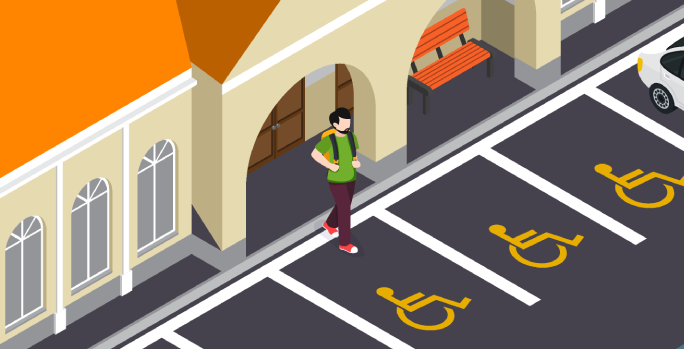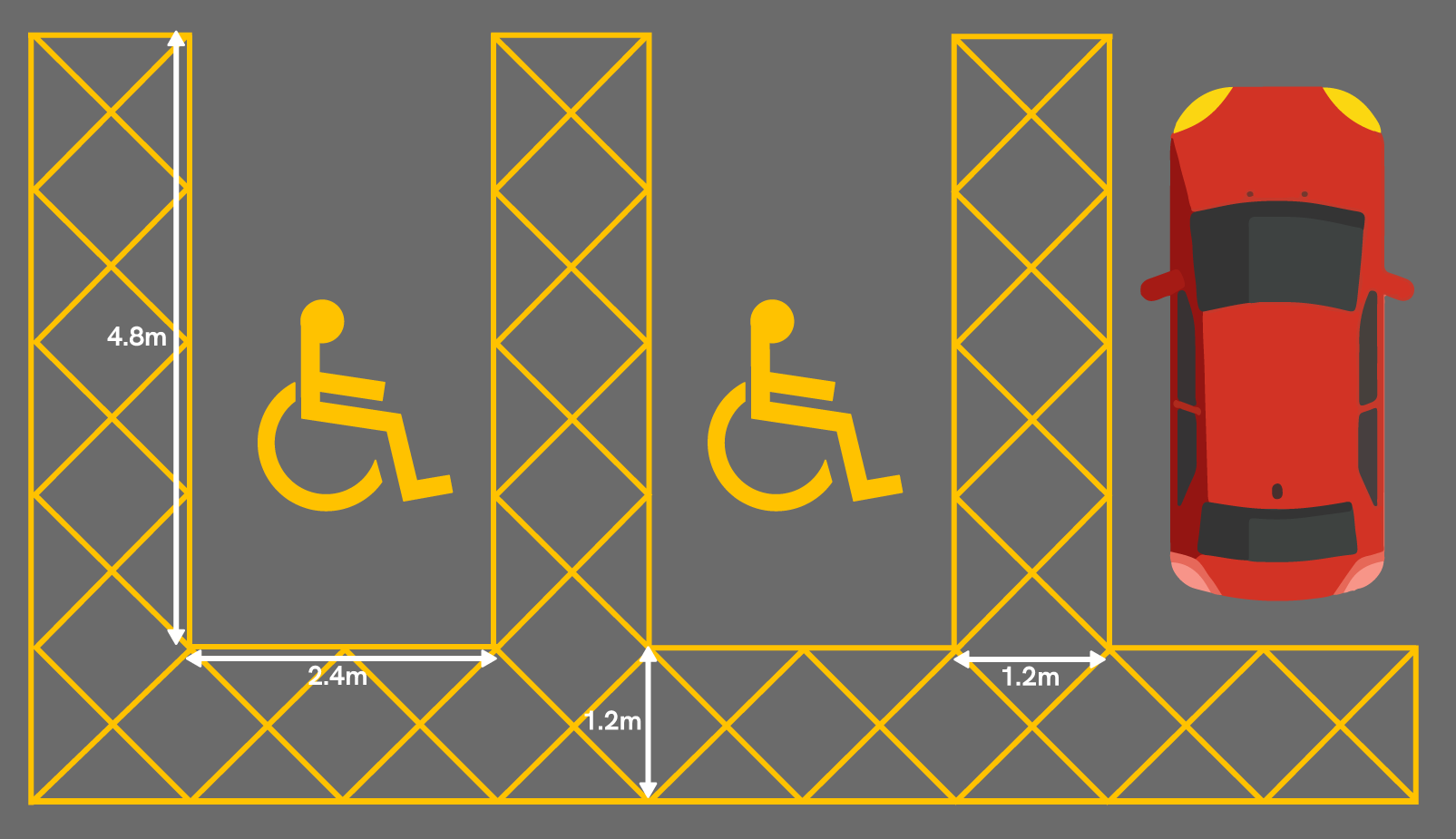In any modern car park, disabled parking spaces are a critical feature designed to accommodate individuals with limited mobility. These designated bays not only ensure compliance with legal requirements but also provide a moral and practical solution to help those with disabilities access buildings, services, and public spaces more easily. In this post, we’ll explore the importance of disabled parking spaces, the markings used to identify them, and why these spaces play a key role in creating an inclusive environment.
Accessibility and Convenience
Disabled parking spaces are typically located as close as possible to entrances, exits, or key access points in buildings such as shopping centres, hospitals, and office complexes. The prime location of these spaces is intended to minimise the distance that disabled individuals need to travel from their vehicle to their destination.
Why It Matters
For people with mobility challenges, navigating long distances or difficult terrain can be a significant obstacle. Providing disabled parking near building entrances not only addresses a basic need for accessibility but also enhances safety, convenience, and independence for those who rely on these spaces. Many urban areas enforce strict legal obligations to provide these spaces, recognising that it’s both a legal and moral duty to ensure equal access for all members of society.

Markings and Features of Disabled Parking Spaces
Disabled parking spaces are distinctly marked to ensure they are clearly visible and easy to identify. Here’s how they differ from regular parking bays:
- Bright Blue or Yellow Lines: In many areas, especially in the UK, disabled parking bays are outlined with bright blue or yellow hatched lines, making them stand out from regular parking spots, which are typically marked with white lines. The blue colour signifies the space is reserved for individuals with disabilities and creates a strong visual cue for drivers to avoid parking there unless authorised.
- International Disabled Symbol: The ground in each disabled bay is marked with the well-known blue wheelchair symbol, a universal sign of accessibility. This ensures the space is easily recognisable from a distance and is a clear signal to all drivers that the bay is intended for those with mobility challenges.
- Wider Bays: Disabled parking spaces are usually wider than standard parking bays to allow for easier access to and from the vehicle. This is especially important for wheelchair users or individuals using other mobility aids, as it provides extra room to manoeuvre safely without obstruction.
- Hatched Lines: To further assist with accessibility, disabled bays are often surrounded by hatched lines. These lines provide additional space around the vehicle, ensuring there is enough room for drivers or passengers to safely exit the vehicle, set up wheelchairs, or operate ramps and lifts. The hatched zones are crucial for making the spaces usable for a wide variety of mobility devices.

Legal and Ethical Considerations
Providing disabled parking is a legal requirement in most areas, with specific regulations governing the number of spaces that must be allocated in public and private car parks. In the UK, for example, the Equality Act 2010 ensures that reasonable adjustments must be made to accommodate people with disabilities, which includes providing adequate parking spaces. Local councils and private operators face fines or penalties if they fail to comply with these regulations.
Beyond the legal obligations, offering disabled parking spaces demonstrates a commitment to social responsibility. These spaces make a clear statement that the needs of disabled individuals are recognised and prioritised. Inclusive design ensures that everyone, regardless of their physical ability, can access the same services, spaces, and opportunities as others.
Why Proper Markings Are Crucial
It’s not enough to simply provide a disabled parking space—the markings must be clear, bold, and well-maintained to prevent unauthorised use and ensure the space remains available for those who need it. Faded or unclear markings can result in confusion, and unfortunately, some drivers may take advantage of poorly marked bays.
Maintaining these markings through regular upkeep is essential for ensuring the accessibility of car parks remains high. In addition, ensuring that these spaces are respected by other drivers is key to their effectiveness. Many car parks now incorporate fines or penalties for non-disabled drivers who misuse these spaces, reinforcing their importance.
Conclusion
Disabled parking spaces are more than just a legal obligation; they represent a crucial aspect of making public and private spaces more accessible for everyone. From the distinct bay lines to the wider, more accessible bays, these spaces allow individuals with disabilities to maintain their independence and access services with ease. In a world that’s increasingly focused on inclusivity, making sure that disabled parking spaces are clearly marked, accessible, and maintained is a responsibility that all car park operators and designers must take seriously.
By ensuring that disabled parking spaces are well-designed and clearly marked, we create a more inclusive society where everyone has the ability to access the resources and spaces they need.